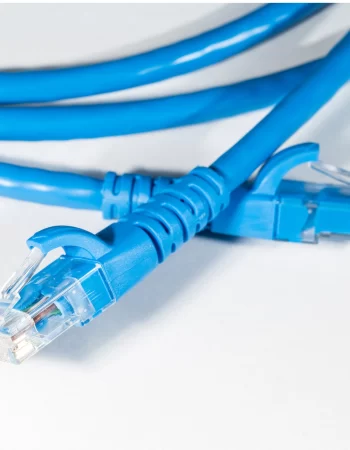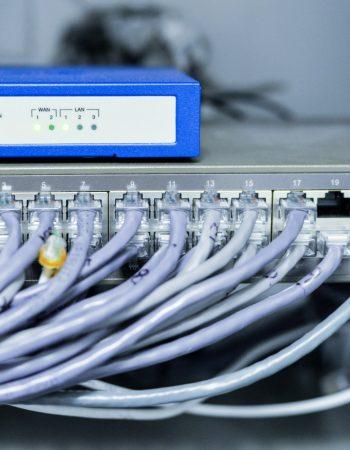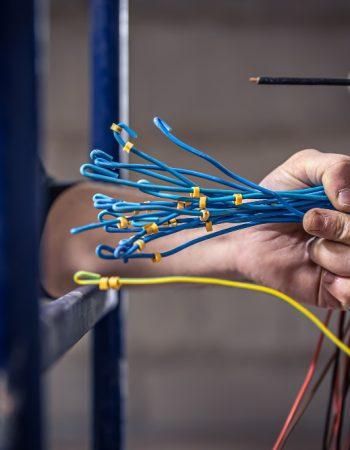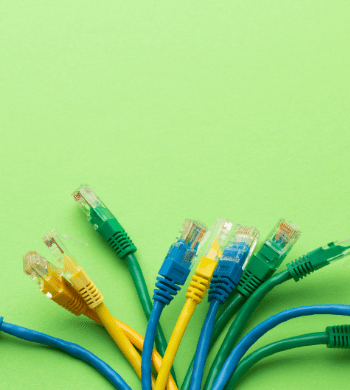Power over Ethernet technology has evolved to be a key part of wireless LAN architectures, smart buildings and enterprise networks
Power over Ethernet (or PoE) is the delivery of electrical power to networked devices over the same Ethernet cabling that connects them to the LAN. This simplifies the devices themselves by eliminating the need for an electric plug and power converter, and makes it unnecessary to have separate AC electric wiring and sockets installed near each device.
Many enterprises have come to rely on PoE to bring electricity over existing data cables to Wi-Fi access points, firewalls, IP phones, and other infrastructure throughout their networks.
PoE’s use has grown substantially since the IEEE standardized it in 2003, and its use will only increase in the coming years as new applications develop. The Power over Ethernet market is expected to grow at 13% per year from 2023 to 2028, hitting a value of $1.86 billion by 2026, according to Dell’Oro Group.Wi-Fi 6E: When it’s coming, what it’s good for
“There are a number of drivers for PoE technology. For example, if you look at WLAN access points, you have increased number of [wireless-spectrum] bands and higher speeds which require higher power,” says Sameh Boujelbene, senior research director for Ethernet switch market research at Dell’Oro. “The new generation of IP phones is adding telepresence features. If you look at surveillance cameras, you have zooming features, you have added analytics. All these new features require higher power.”
https://imasdk.googleapis.com/js/core/bridge3.569.0_en.html#goog_1107423459
0 of 30 secondsVolume 0%
How does power over Ethernet work?
PoE transmits DC power over the wires inside an Ethernet cable. In some variants, power and data travel over separate pairs within the cable, but in others they travel along the same copper wires. Because Ethernet uses differential signaling, the power and data transmissions don’t interfere with one another. The technology is similar to what’s known as phantom power, a technique used by condenser microphones and legacy plain old telephone service (POTS).
This is appropriate because one of the PoE’s first big use cases emerged around 20 years ago, when many enterprises began replacing those POTS lines with IP phones; PoE made it possible to roll out more power-hungry IP phones into the same spaces without requiring a separate dedicated power connection.
PoE networks consist of powered devices—basically, any device that receives both power and data from the network—along with power sourcing equipment, which delivers electrical power to the network from an external power source.Nominations are open for the 2024 Best Places to Work in IT
Many Ethernet switches have the capability to serve as PoE power sourcing equipment, but you can also use injectors to deliver power to parts of the network where the gear isn’t PoE-enabled. PoE transmission distance doesn’t go past 100 meters, so having injectors or other PoE-enabled switches—called midspan devices—at regular locations along the network is a must.
Not all networked devices are capable of being powered by a PoE connection. These devices can still receive data from that connection, though, and there is no danger of their network card being fried by incoming power: each PoE connection performs a handshake to assess an endpoint device’s capabilities before attempting to power it. You can also use a PoE splitter that will separate the power and data from the Ethernet cabling and deliver the former into a standard power jack.
PoE works over standard Ethernet cable that you probably already use for your network. The only catch is that for the Type 3 and 4 PoE standards that represent the current state of the art, you need 8-pin Ethernet cable. Some older networks still use 4-pin, so check before proceeding.
Benefits of power over Ethernet
The driving ideas behind PoE were to eliminate the need for electrical outlet installation, especially in remote or hard to reach locations.
PoE promises to:
- Reduce deployment costs by up to $1,000 per device.
- Reduce the need for AC power adaptors.
- Simplify installation by letting customers employ a single Cat5/5e/6 cable for both data and power.
- Offer customers centralized power backup and management.
- Make it possible to repurpose copper from legacy phone networks.
- Make is easier to move devices without downtime.
“Energy saving is a big part of PoE in particular, but the standard is really focused on energy efficiency as it uses all four pairs of [wires in] Ethernet Cat 5 cabling whereas previous versions of the standard used two,” said David Tremblay, Ethernet Alliance PoE Subcommittee chair and system architect at Aruba Networks, an HPE company.
The latest standard maintains a power-signature level that supports lighting or IoT applications and has acceptable standby performance when needed.
Another benefit, Tremblay said, is that PoE in combination with analytics software can let facilities-management teams determine what areas of buildings are unoccupied and save electricity by remotely turning off lights and HVAC devices.
An important and growing benefit of PoE is in deploying Wi-Fi access points. These devices are often placed in locations where it would be difficult to extend traditional electric lines, such as behind ceiling panels, Boujelbene said.
The growth of wireless in buildings, offices and places like sports arenas fuels the need for PoE, Tremblay said. “PoE makes wireless rollouts so much more tangible.”
What are the different power over Ethernet standards, and what’s High Power PoE?
PoE standards are broken down into four types, which vary based on power capacity. The original IEEE PoE standard (802.3af-2003, now rebranded as Type 1) specifies how to deliver up to 15.4W of DC power per switch port to each device at up to 33 feet over Category 3, 5, 5e, and 6 Ethernet cables.
The standard sets 15.4W as the maximum, but provides for only 12.95W to reach the devices because power is dissipated within the cable over distance. That loss doesn’t affect network performance of 10/100/1000Mbps Ethernet links to the devices.
Over time newer devices required more power, so a new standard, PoE+ (IEEE 802.3at, or Type 2), was created in 2009, bumping the maximum power to 30W with 25.5W reaching devices.
The current standard, 802.3bt, pushes the maximum power even higher. It is expected to be the last PoE standard, according to Tremblay. It’s broken into two different types: Type 3, or UPoE, which can deliver 60W per port and 51W to devices, and Type 4, or High Power PoE, which can deliver 100W from the source switch, with 71.3W available to devices. Power at this level is what’s needed to sustain PoE-driven IoT rollouts.
The big challenge: Power over Ethernet interoperability
The single greatest challenge for PoE is assuring interoperability.
The Ethernet Alliance’s Power over Ethernet (PoE) Certification Program can help enable faster PoE installations and avoid interoperability issues, Tremblay said. Ethernet vendors including Analog Devices, Cisco, HPE, Huawei, Microsemi, and Texas Instruments are part of the certification program.
But as new classes of devices are developed, industry players need to forge new partnerships with companies offering certified equipment, the Dell’Oro group said. “With the diversity of application, come interoperability problems which dictate the need for testing and certification,” Boujelbene said.
Certified products range from component-level evaluation boards, to power-sourcing enterprise switches, to midspan PoE power sources. Details of certified products are available via the program’s public registry.
Porter Tech can help you with your PoE projects, reference our network cabling and services.





